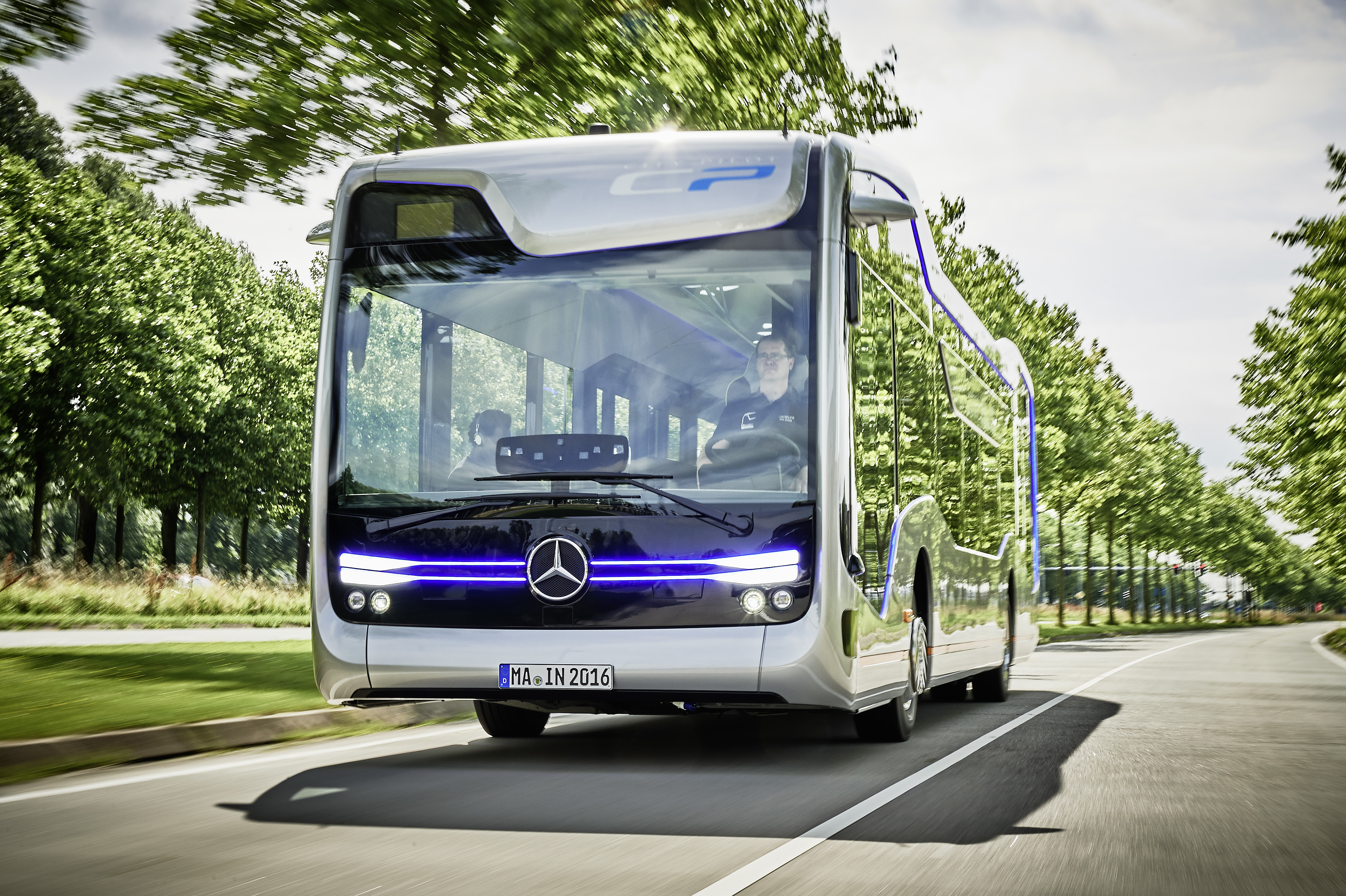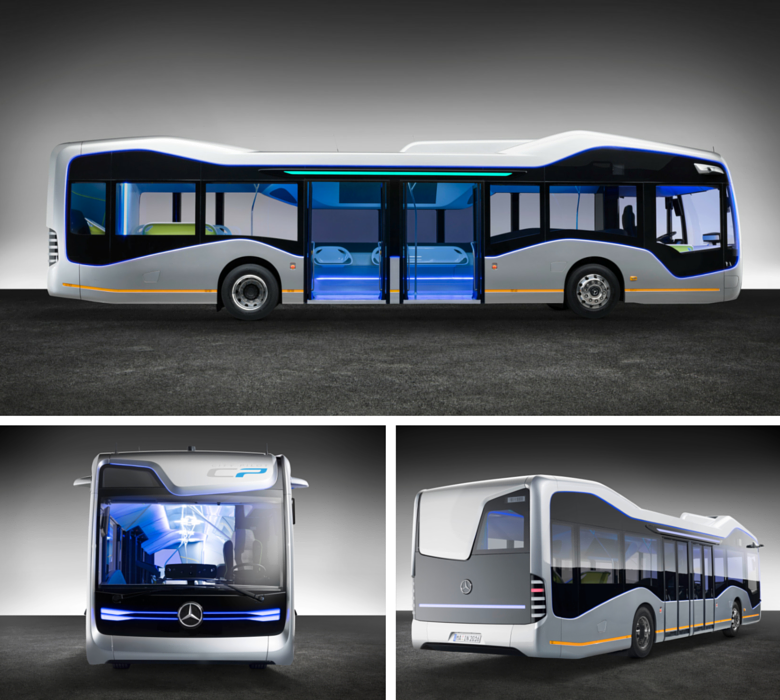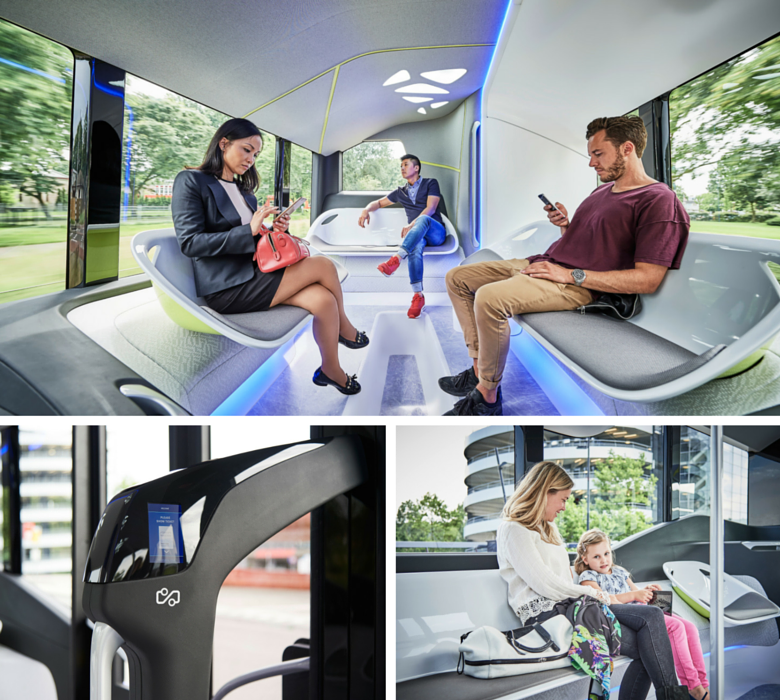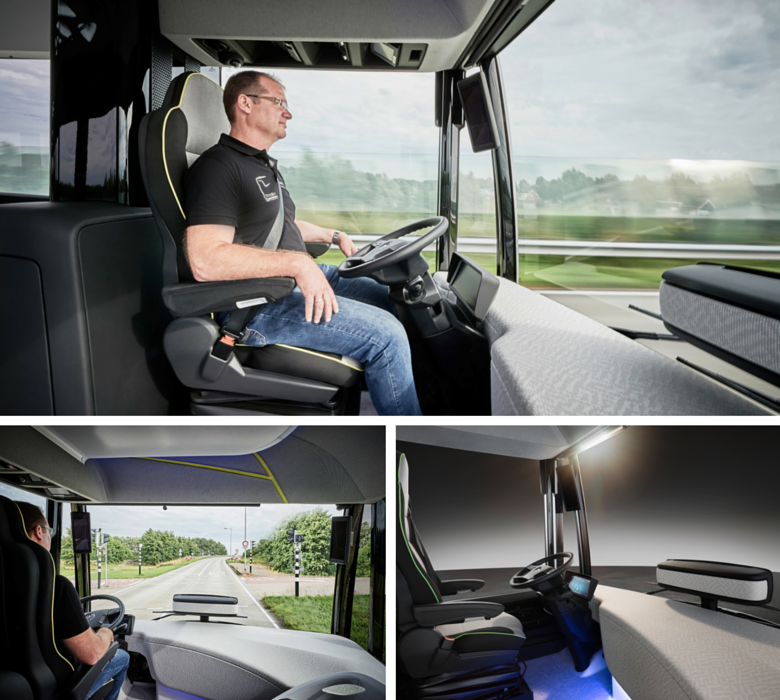
Daimler Buses, the world’s biggest bus manufacturer, unveiled Mercedes-Benz Future Bus with CityPilot. The world premiere of its semi-automated city bus took place in the Netherlands where the bus drove on a 20 km long route from Amsterdam Airport Schiphol to Haarlem for the first time.
A 20 kilometre journey included 11 stops, nearly 25 traffic lights, 3 tunnels and a number of tight bends. The test drive verified that Mercedes-Benz Future Bus equipped with its new technology CityPilot operates more safely and efficiently than conventional buses.

“With our Highway Pilot, we showed nearly two years ago that autonomous driving will make long-distance truck transport safer and more efficient. We are now putting this technology into our city buses with CityPilot. The system is a further development of Highway Pilot, especially for big cities. It allows us to drive partially autonomously on specially marked bus lanes. This makes public transport safer, more efficient and more productive. More people can travel from A to B quickly, punctually and in comfort. To the benefit of all: bus operators, bus drivers and passengers,” said Dr. Wolfgang Bernhard, Member of the Board of Management of Daimler AG for Daimler Trucks & Buses.
CityPilot – another milestone on Daimler Buses’ way to autonomous driving
Mercedes-Benz Future Bus’ technology CityPilot enhances safety, efficiency and comfort of the bus. According to Daimler, the technology is able to recognize traffic lights and communicate with them via Wi Fi, receiving information on traffic lights status. It recognizes obstacles, including pedestrians, on the road, and brakes autonomously. Although throughout the journey driver doesn’t need to press accelerator, brake pedal or steer, the driver is able to intervene at any time and take control over driving where it is required. Besides this, the system recognizes where the route is suitable for automated driving and informs the driver accordingly. The CityPilot technology ensures precise positioning of the bus when halting at bus stops. Technology also includes long- and short-range radar systems that constantly monitor the route ahead, GPS system, cameras that scan the road, surroundings and record movements of the bus and actions of the driver.
The bus is allowed to accelerate the speed up to 70 km/h. It arrives at the bus stop in automated mode and opens and closes its doors automatically. The system’s early recognition of each traffic light status allows predictive and consistent driving style, which makes Future Bus a more fuel efficient vehicle. “The advantages of CityPilot for our customers are clear: Our Future Bus operates fuel efficiently and with minimal stress on the engine. That has a positive impact on operating and maintenance costs, vehicle lifetime and availability,” said Hartmut Schick, Head of Daimler Buses.
Futuristic design that breaks with conventions
According to Daimler, a 12 metre long Mercedes-Benz Future Bus’ both the exterior and interior designs take their lead from city architecture. “Its design intentionally breaks with conventions, and is based on new approaches,” says Daimler.
Exterior design:
- Below the windscreen the Mercedes star as a trademark is the centre piece. Two white light bars extend from it to each side. In view of their shape, the designers refer to these as "paddles". Their illumination in white (manual) and blue (semi-automated) indicates the current driving status of the bus.
- At the top the windscreen transitions into a compact destination indicator. A panel covers the area above the driver. This design touch symbolises the fact that the driver on board this semi-automated city bus only plays a diminished role behind the wheel.
- The usual doors facing the cockpit and behind the rear axle are omitted - instead passengers enter and leave the bus via two double-width doors between the axles.
- An electronic ticket system makes the usual ticket control by the driver unnecessary. The ticket system is a major part of the vehicle's connectivity – the driver is able to concentrate on key activities rather than selling and checking tickets.

Interior design:
- It takes its lead from public spaces such as squares and parks.
- It is divided into three zones: At the front near the driver is the "Service" zone, in the middle near the doors the "Express" zone for short distances and mainly standing passengers and rapid passenger flows. At the rear is the "Lounge" zone intended for a longer stay on board. Despite these different user zones, the entire passenger compartment is open-plan in nature.
- The grab rails for standing passengers are arranged in the centre zone.
- Passengers receive information from two 43-inch monitors. These are embedded in an overhead console in the central zone of the passenger compartment. They allow the bus' progress along the route to be followed, and provide information and entertainment similar to that in an airport waiting area.

Cockpit is part of the interior, and even manages without a partition and separating door.

Source: Daimler
by Natalie Myhalnytska
You may also like
Metro of Santiago To Become The World’s First Metro Powered By Solar Energy
21 Dutch Cleantech Startups To Keep an Eye On
Engineers from Technical University of Munich are Developing Fast-Speed Electric Jet
